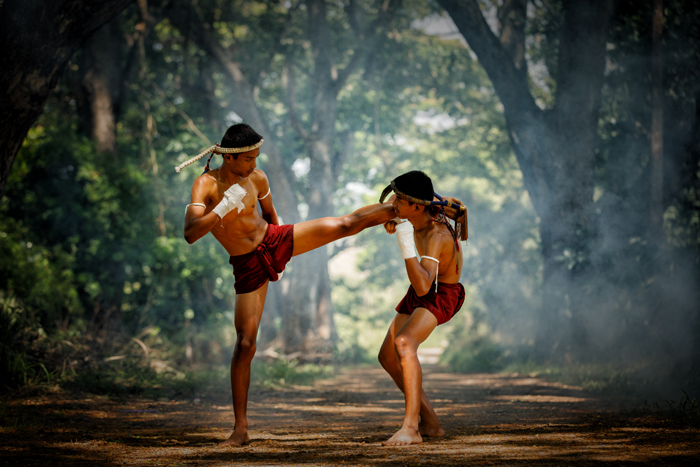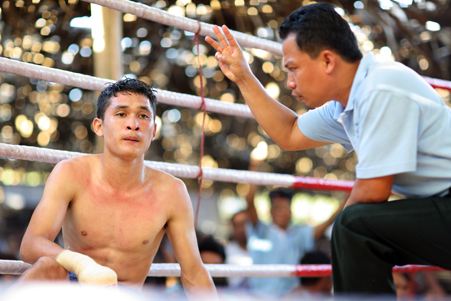The Secrets of Ninjutsu - Power of the Ninja
Ninjutsu was once the trade of Japan’s covert operatives, and it was often used by the Shinobi (Ninjas) in stealth missions and guerilla warfare. Ninjas were hired to infiltrate enemy castles in Feudal and spy on the other side.
Today, the age-old techniques of Ninjas have transitioned from a mythical martial art used for espionage to a system of self-defense and mental discipline that is practiced by martial artists worldwide. In this comprehensive guide, we will dive into the core of Ninjutsu as we explore its heritage, techniques, and the essence of its training today.
The History of Ninjutsu

The origins of Ninjutsu are often shrouded in mystery and legend. Tracing back to feudal Japan, where it was developed as a collection of espionage and survival techniques. These skills were essential for the shinobi. The Shinobi was another name for Ninja; these operatives were employed by samurai warlords to gather intelligence, conduct reconnaissance, and execute covert operations.
Ancient Lineage and Shinobi Clans
Ninjutsu’s roots can be found in the strategic practices of the Shinobi, who were organized into clans with their own unique set of skills and traditions. The most famous of these were the Iga and Kōga clans, whose expertise in guerrilla tactics and unconventional warfare was unparalleled. Their methods were born from necessity, evolving from the turbulent social and political landscape of Japan during the Kamakura (1185-1333) and Muromachi (1336-1573) periods.
The Role of Shinobi in Feudal Japan

Shinobi were a crucial element in the power dynamics of feudal Japan. They conducted sabotage, assassination, and psychological warfare, often influencing the outcomes of battles and sieges. Their secretive and elusive nature made them a powerful tool in the arsenal of any daimyo (feudal lord) seeking to gain the edge over their rivals. Shinobi became known for their stealth methods, which gained them a reputation as operatives used for secret missions.
The Edo Period and the Decline of Ninjutsu
With the unification of Japan under the Tokugawa shogunate in the Edo period (1603-1868), the need for shinobi slowly began to disappear. The era of relative peace reduced the demand for their services, leading to a decline in the practice of Ninjutsu. However, the knowledge did not disappear entirely; it was preserved and passed down through families and secretive schools, often masked as other martial arts to avoid persecution.
Ninjutsu’s Evolution and Survival
Despite its decline during the Edo period, Ninjutsu survived into the modern era. The 20th century saw a resurgence of interest in these ancient techniques, with several martial artists claiming lineage to the historical ninja. This led to the establishment of various Ninjutsu schools around the world, each interpreting the art in their own way and often blending it with other martial arts practices.
Ninjutsu Foundations and Techniques

Ninjutsu is the martial art of the shadows, a stealth based martial art that has captured the imagination of those seeking a deeper understanding of covert operations and the art of invisibility. With its origins shrouded in the mists of feudal Japan, Ninjutsu has transformed from a method of disorientation and espionage to a disciplined martial arts style. It is a tradition enriched with ninja techniques and teachings that have been passed down through generations of the fabled Shinobi.
The Foundations of Ninjutsu
The core of Ninjutsu lies in the art of stealth and entering methods known as shinobi iri, where the ninja techniques of non-detection and infiltration take place. These foundational skills are sneaking techniques that allow Shinobi (Ninja) to move like whispers across creaky floorboards and shadowed walls. They are considered a core fundamental technique of Ninjustu, and without the shinobi iri stealth movement, a Ninja, “the one who is invisible,” would no longer be invisible.
Some key aspects of Ninjutsu are:
- disguise
- infiltration
- unique combat skills
- remaining hidden
- striking from the darkness only when necessary
This martial arts style revolves around the art of remaining unseen and unheard while still being able to complete a mission.
Ninjutsu Techniques
The arcane knowledge of Ninjutsu is not lost to history; it is alive and evolving, adapting its historical techniques to modern martial arts. Ninjutsu has always been more than just combat skills; it is a comprehensive martial arts system that includes:
- non-detection
- misdirection
- an array of weaponry
- medicinal knowledge
Some of the well-known techniques of Ninjutsu include:
- Shinobi Iri – The art of entering or infiltrating unnoticed.
- Taijutsu – Unarmed combat techniques that utilize the body’s natural weapons.
- Kenjutsu – Sword techniques that are a vital part of a ninja’s weaponry skills.
- Shurikenjutsu – The skillful throwing of small bladed objects, such as shuriken.
- Kusarigamajutsu – The use of a chain-sickle weapon to ensnare and defeat opponents.
- Intonjutsu – The practice of escaping and concealment.
- Hensōjutsu – The art of disguise and impersonation.
- Seishinteki Kyōyō – Spiritual refinement and mental training.
- Kayakujutsu – The use of smoke and fire in combat and signaling.
- Hojōjutsu – The art of binding and restraining an opponent with rope.
- Suiren – Training in water to improve strength and adaptability.
- Bōjutsu – Techniques involving the use of a staff or long pole as a weapon.
- Happo Sabaki – Body evasion techniques to avoid detection and attacks.
Many Ninjutsu practitioners still practice these techniques today, and these are some of the fundamental techniques and disciplines that make up the modern martial art of Ninjutsu.
Weapon Mastery and Kenjutsu
Kenjutsu, the art of the sword, is one of the most important aspects of Ninjutsu’s weapon-based skills. Today, Ninjutsu practitioners still practice traditional forms, such as the precise throwing of the shuriken (Ninja Star), while also embracing the teaching of sword fighting.
The ancient principles of using weapons in unorthodox ways continue to be a focus in modern Ninjutsu training. Some Ninjutsu schools also teach Kendo Ninjutsu, adapting many techniques from the Japanese martial art of Kendo to suit Ninjutsu.
Taijutsu – Unarmed Combat
Taijutsu is a broad term for the art of unarmed combat; these techniques usually originate from other traditional Japanese martial arts, such as Karate. Techniques such as punching, kicking, takedowns, and submissions can be taught in Taijutsu. Ninjutsu dojos will have different approaches to how they teach Taijutsu. This is because Taijutsu is a broad term and can be practiced in different ways.
Unarmed combat remains a vital part of Ninjutsu as it enables practitioners to have a different approach to fighting. Modern adaptations of Ninjutsu might include more unarmed combat techniques, as they may find them more practical for real-life situations. It is a useful part of Ninjutsu training and should not be overlooked.
Training Like a Ninja: Methods and Schools

Mastering Ninjutsu requires discipline and dedication, with each step in a dojo echoing the footsteps of Ninjas in the past. Embarking on the Ninjutsu journey is about embracing a lifestyle that extends beyond the dojo walls; for many practitioners, Ninjutsu is a way of life. Realizing this way of life is achieved by practicing regularly and constantly learning new techniques through a knowledgeable and experienced Sensei.
Finding a Dojo and Sensei
If you would like to truly immerse yourself in the world of Ninjutsu, seeking out a dojo with a sensei who is versed in the art’s ancient teachings is important. Finding the right sensei is crucial, as they are the bridge between the art’s historic past and its modern present. This will be a decision based on what is most important to you. Ninjutsu is one of the most diverse martial arts, and not all dojos will teach it the same way.
You should decide what aspects of Ninjutsu you would like to learn. Some dojos will teach more weapons training, while others will teach unarmed combat skills more. Researching the dojo and its practices will be important as you embark on your journey into Ninjutsu. Depending on where you live, many big cities have a variety of dojos to choose from, while some smaller towns may only have a few.
Physical Conditioning and Agility
The physical conditioning and agility integral to Ninjutsu are about resilience, efficiency of motion, endurance, and strength. The training regimes of Ninjutsu are designed to maintain peak physical readiness, ensuring that a ninja’s body can respond with precision and endurance to any demand placed upon it.
Ninjutsu in the Modern World
In today’s world, becoming a ninja appeals to many martial arts fans. This means Ninjutsu has a large following worldwide, and it is one of the martial arts that seems to be growing at a fast pace. Ninjutsu techniques have adapted because of this, and a wide variety of Ninjutsu styles are now available.
Preserving the Artform
Efforts to preserve the rich heritage of Ninjutsu are evident in the activities of organizations and institutions dedicated to maintaining the authenticity of its teachings. Some ways in which the artform is celebrated and preserved include:
- Museums that showcase historical artifacts and information about Ninjutsu
- Festivals that feature demonstrations and performances of ninja skills and techniques
- Academic programs that offer courses and research opportunities on the history and practice of Ninjutsu
These efforts ensure that the knowledge and skills of the ninja are not lost to time and can be preserved through videos, books, and museums.
Adapting Ninjutsu to Modern Life
Ninjutsu has thrived by adapting to the modern world, proving its lasting relevance and versatility. Ninjutsu offers a unique approach to self-defense in an era where battles take place in the complexities of urban environments and personal safety rather than on open fields.
The ancient martial art now offers a variety of teachings from unique martial arts styles, incorporating unarmed combat and self-defense techniques. It has preserved its basic techniques, along with its core techniques, while also refining the martial art to meet the objectives of modern practitioners, who seek an art form that is both practical and traditional.
Summary
Ninjutsu is a martial art that is as much about the movement of the body as it is about the stillness of the mind. From its feudal beginnings to its modern-day adaptations, Ninjutsu has remained a powerful martial art for adaptation and growth. We hope the reader leaves with a newfound respect for the martial art of Ninjutsu and can one day begin their own path to personal mastery and enlightenment.
Frequently Asked Questions
How many ninjutsu techniques are there?
Ninjutsu incorporates techniques from a wide variety of martial arts, which makes it difficult to know the exact number of techniques involved.
Can a person learn ninjutsu?
Yes, a person can learn ninjutsu by joining a Ninjutsu school. These are usually available in larger cities and can be found in many parts of the world. They can learn the true techniques of the Ninja’s fighting style, which revolves around the core idea of stealth.
Is ninjutsu possible in real life?
The media’s portrayal of Ninjutsu today is a fabrication, although it did exist and was practiced in feudal Japan. Many people worldwide still practice Ninjutsu, despite the disputed historical lineage and lack of centralization like other martial arts.
What are the fundamental principles of Ninjutsu?
The fundamental principles of Ninjutsu encompass stealth, non-detection, infiltration, and the use of evasion and deception to gain a strategic advantage. These principles form the core of Ninjutsu.









